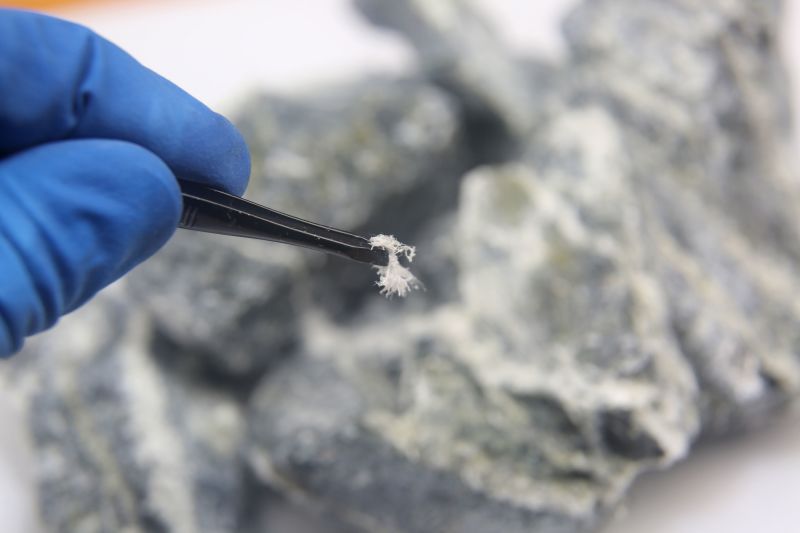The US Environmental Protection Agency said Monday that it is taking a “historic” step by banning ongoing uses of asbestos, which has long been linked to multiple types of cancer.
The agency’s announcement of the final rule applies to chrysotile asbestos, the only form of asbestos currently being used in or imported to the United States. It is the most common type of asbestos used in the world, used in car parts such as aftermarket automotive brakes and linings and other vehicle friction products and gaskets. It’s been banned in 50 other countries.
Asbestos is a thin, fibrous, naturally occurring material that is flexible and resistant to corrosion, electricity and heat. It’s inexpensive, which led manufacturers and builders to use several forms of the material in cigarette filters, hair dryers and home insulation. Manufacturers dialed back the use of asbestos once scientists determined that the fibers could easily separate into tiny particles that could be inhaled into the lungs, causing damage.
While the use of asbestos has been declining for decades in the US, asbestos exposure is linked to more than 40,000 deaths in the US, according to the EPA.
People who are exposed to asbestos can develop lung cancer, mesothelioma, ovarian cancer and laryngeal cancer, studies show.
Calling it a “major milestone” for chemical safety “after more than three decades of inadequate protections and serious delays during the previous administration,” the EPA celebrated the change Monday.
“The science is clear – asbestos is a known carcinogen that has severe impacts on public health. President Biden understands that this concern that has spanned generations and impacted the lives of countless people. That’s why EPA is so proud to finalize this long-needed ban on ongoing uses of asbestos,” EPA Administrator Michael Regan said in a statement.
The EPA set different deadlines for different industries to transition away from asbestos.
For the auto industry, for brakes, linings, other vehicle friction products and gaskets, the ban goes into effect six months after the date of the final rule, which is 60 days after it appears in the Federal Register.
The chlor-alkali industry, the main source of chlorine globally, uses asbestos diaphragms to make sodium hydroxide and chlorine, which the EPA says is “critical” to disinfect drinking water and wastewater. The agency said there are other methods to produce chlorine, but the eight plants in the US that still use these asbestos diaphragms will have to find other methods to do their work. They will get at least five more years to make this transition.
The American Chemistry Council, a trade association that represents companies that use asbestos products, said in a statement that its Chlorine Panel provided the EPA with data that suggested it needed a 15-year transition timeline to “support an orderly transition and to avoid a significant disruption of chlorine and sodium hydroxide supplies.” The council said it has not seen the final rule.
The EPA said it will require strict workplace safety measures to protect workers’ health where there is a phaseout that is longer than two years.
The AFL-CIO, the country’s largest labor federation that includes unions, applauded the EPA’s ban for providing “landmark protection” for workers.
“This action once more shows the deep commitment of the Biden administration to ensure working people remain safe and healthy on the job,” the federation said in a statement. It added, though, that although it is a critical step forward, Monday’s action does not eliminate all types of asbestos fibers and does not address “legacy” asbestos through the country’s old buildings and infrastructure.
“We urge the EPA to move swiftly to address those risks as well,” the AFL-CIO said.
The EPA also announced Monday that it is evaluating legacy uses of asbestos and asbestos-containing talc, a super-soft mineral that is often mined alongside asbestos.
Monday’s ban is something Sen. Jeff Merkley, D-Oregon, said is a “long overdue step forward for public health.”
“However, it cannot be the end of the road when it comes to phrasing out other dangerous asbestos fibers, and Congress has a role to play here when it comes to providing stronger protections for our health,” Merkley said.
